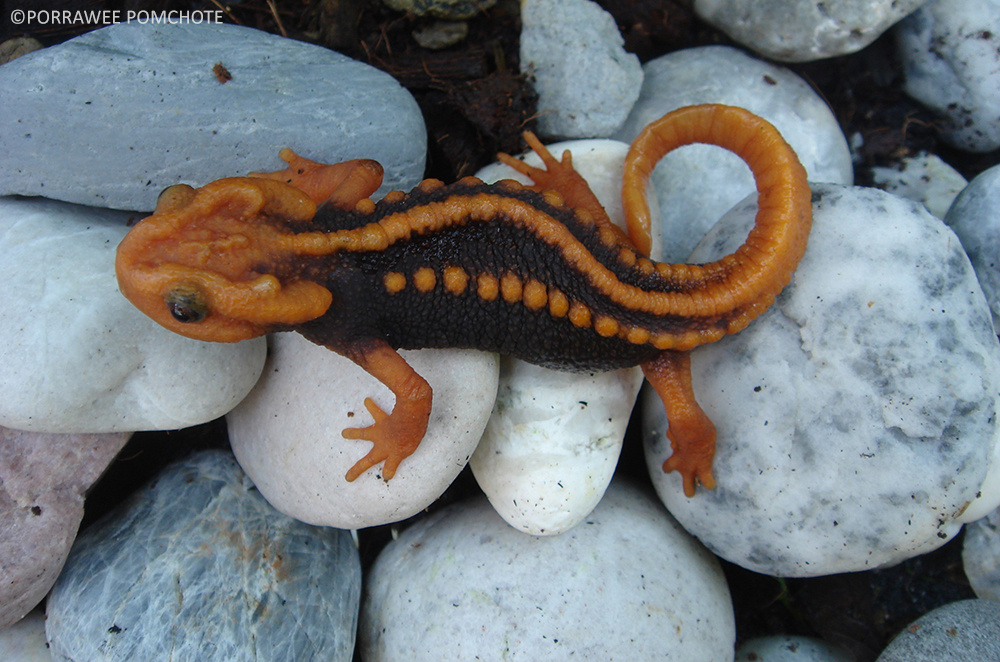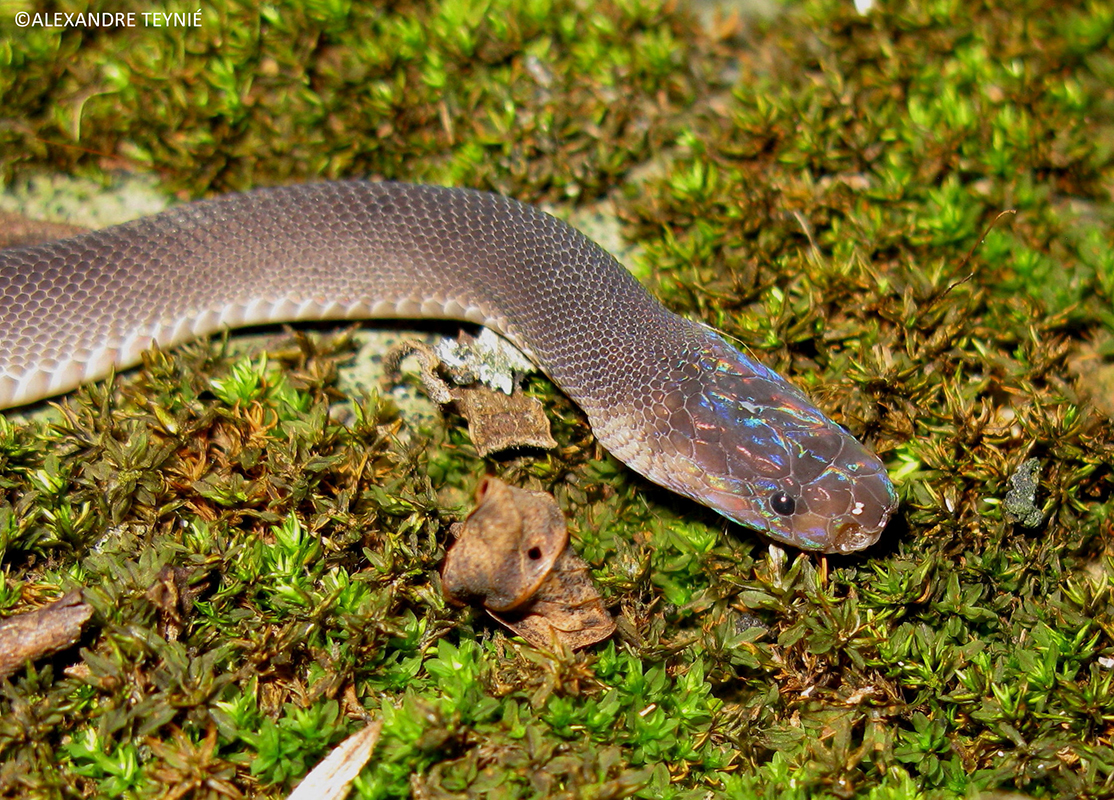'Klingon Newt' and 'Ziggy Stardust' Snake: New Species Found in Asia

A newt that resembles a Klingon from "Star Trek" and a snake with iridescent rainbow scales that calls to mind David Bowie's colorful extraterrestrial alter ego Ziggy Stardust are two of 163 new species recently discovered in Southeast Asia.
Amphibians, reptiles, plants and mammals that were previously unknown to science were found during expeditions to some of the most remote areas in the Greater Mekong — a region that encompasses Vietnam, Thailand, Cambodia, Laos and Myanmar — where researchers explored dense jungles, caves, rivers and forest canopies.
The new species — which also included a spiky lizard, an orange-eyed frog and a flower with "mouse ear" petals — were all described in 2015. They represent the latest discoveries from a location that is well-known for its biodiversity, with 2,409 new species from the Greater Mekong described since 1997, according to the World Wildlife Fund (WWF). [In Photos: Bizarre New Species Discoveries Include 'Klingon Newt']
On Dec. 19, the WWF issued a report outlining the new finds — 14 reptiles, 11 fish, three mammals, nine amphibians and 126 plants. However, the region's biodiversity is increasingly threatened by destructive human activity, which the WWF described as steadily encroaching on wild places worldwide since the mid-20th century.
One of the new species — Tylototriton anguliceps, the so-called "Klingon newt" — was found in Thailand, and is one of only four known native newt species. The bright-orange ridges that top its head and snake down its back call to mind the bumpy foreheads of Klingons from the "Star Trek" television shows and movies.
The uniquely colored snake Parafimbrios lao — which earned its "Ziggy Stardust" nickname for the rainbow-colored scales decorating its head — is from Laos, and represents a new genus as well as a new species.

Many unknown species still inhabit the Greater Mekong — an average of two new species are found each week, the WWF reported — but human activity offers a growing threat to their future, with habitat destruction and poaching likely to drive many species to extinction before they can be found and described.
Sign up for the Live Science daily newsletter now
Get the world’s most fascinating discoveries delivered straight to your inbox.
Current trends, if they continue, will extend humanity's footprint farther into fragile habitats, disrupting or destroying them irrevocably, according to the WWF Living Planet Report 2016, an annual publication that outlines conservation challenges on a global scale. The WWF Living Planet Index, which measures population gains and losses in Earth's wildlife, suggests that vertebrate species numbers could decline by two-thirds by 2020.
Offsetting this devastating course will require the efforts of not only biologists who identify new species, but of conservationists and policymakers to create sustainable solutions that will protect threatened ecosystems and wildlife, the WWF explained.
Meanwhile, new species like the Klingon newt serve as vital reminders of how much unusual biodiversity remains to be discovered — and how much we may stand to lose.
Original article on Live Science.

Mindy Weisberger is an editor at Scholastic and a former Live Science channel editor and senior writer. She has reported on general science, covering climate change, paleontology, biology and space. Mindy studied film at Columbia University; prior to Live Science she produced, wrote and directed media for the American Museum of Natural History in New York City. Her videos about dinosaurs, astrophysics, biodiversity and evolution appear in museums and science centers worldwide, earning awards such as the CINE Golden Eagle and the Communicator Award of Excellence. Her writing has also appeared in Scientific American, The Washington Post and How It Works Magazine. Her book "Rise of the Zombie Bugs: The Surprising Science of Parasitic Mind Control" will be published in spring 2025 by Johns Hopkins University Press.










